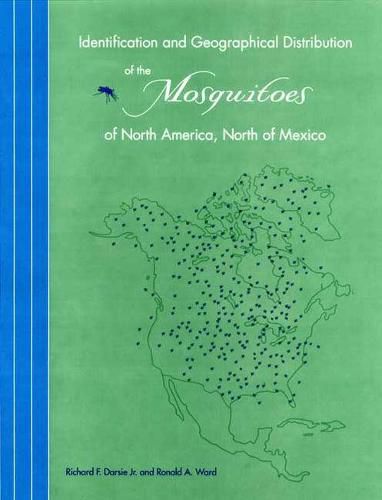Readings Newsletter
Become a Readings Member to make your shopping experience even easier.
Sign in or sign up for free!
You’re not far away from qualifying for FREE standard shipping within Australia
You’ve qualified for FREE standard shipping within Australia
The cart is loading…






This title is printed to order. This book may have been self-published. If so, we cannot guarantee the quality of the content. In the main most books will have gone through the editing process however some may not. We therefore suggest that you be aware of this before ordering this book. If in doubt check either the author or publisher’s details as we are unable to accept any returns unless they are faulty. Please contact us if you have any questions.
Greatly anticipated and sorely needed, this book updates the successful guide to North American mosquitoes published by the American Mosquito Control Association in 1981. It includes 12 new species that have since been added to the North American mosquito fauna, revised distribution maps of all species, and revised and completely illustrated identification keys for the adult females and fourth instar larvae of all 174 species and subspecies known to occur in North America, north of Mexico.
In chapters on adult and larval morphology, the coauthors-both world-renowned in their field of taxonomy-discuss the anatomical structures mentioned in the keys and pictured on full-page plates. They provide separate generic keys for adult females and larvae and keys to the species of each genus. In addition, they show the geographical distribution of each taxon in a series of maps and include a synopsis of the occurrence of species in the states and provinces of the United States and Canada.
This book’s usefulness to mosquito control programs cannot be overestimated. For example, it deals with 9 exotic species that have been introduced and today successfully thrive in North America. Several are increasing their range and this book will help identify these species when they first invade an area.
Because of the occurrence of mosquito-borne diseases and the widespread distribution of mosquitoes as pests to humans, professionals must know how to identify them. With its wealth of up-to-date information, this book is the only one of its kind available for specialists working on mosquito-borne diseases and in mosquito control units and for both introductory and advanced students who study entomology.
$9.00 standard shipping within Australia
FREE standard shipping within Australia for orders over $100.00
Express & International shipping calculated at checkout
This title is printed to order. This book may have been self-published. If so, we cannot guarantee the quality of the content. In the main most books will have gone through the editing process however some may not. We therefore suggest that you be aware of this before ordering this book. If in doubt check either the author or publisher’s details as we are unable to accept any returns unless they are faulty. Please contact us if you have any questions.
Greatly anticipated and sorely needed, this book updates the successful guide to North American mosquitoes published by the American Mosquito Control Association in 1981. It includes 12 new species that have since been added to the North American mosquito fauna, revised distribution maps of all species, and revised and completely illustrated identification keys for the adult females and fourth instar larvae of all 174 species and subspecies known to occur in North America, north of Mexico.
In chapters on adult and larval morphology, the coauthors-both world-renowned in their field of taxonomy-discuss the anatomical structures mentioned in the keys and pictured on full-page plates. They provide separate generic keys for adult females and larvae and keys to the species of each genus. In addition, they show the geographical distribution of each taxon in a series of maps and include a synopsis of the occurrence of species in the states and provinces of the United States and Canada.
This book’s usefulness to mosquito control programs cannot be overestimated. For example, it deals with 9 exotic species that have been introduced and today successfully thrive in North America. Several are increasing their range and this book will help identify these species when they first invade an area.
Because of the occurrence of mosquito-borne diseases and the widespread distribution of mosquitoes as pests to humans, professionals must know how to identify them. With its wealth of up-to-date information, this book is the only one of its kind available for specialists working on mosquito-borne diseases and in mosquito control units and for both introductory and advanced students who study entomology.